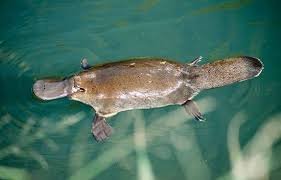SUPERBACTERIE resistant to all known antibiotics spread to hospitals around the world
SUPERBACTERIE resistant to all known antibiotics spread to hospitals around the world, warned Australian scientists.
Melbourne University researchers have discovered three types of resistant bacteria in samples from ten countries, including strains in Europe that are resistant to all medicines currently available on the market.
Bacteria is associated with MRSA
(MRSA, photo by School of Medicine, University of Zagreb)

The bacterium known as Staphylococcus epidermidis is associated with the more known and deadly MRSA.
It can be naturally found on human skin, and it is most often infested by older people or patients with prosthetic implants such as catheter or artificial joints.
(photo: Staphylococcus epidermidis 400x | by Marc Perkin)

"It can be deadly, but usually in patients who are already severely ill or in hospital care. It is difficult to beat her and infections can be severe," says Howden, Head of the Microbiological Laboratory of the Melbourne University.
His team studied hundreds of S. epidermis samples from 78 world hospitals and discovered strains that with little changes in their DNA became resistant to two of the most common antibiotics to treat hospital infections.
Spreads due to excessive and unnecessary use of antibiotics

Experts believe that super-bacteria are expanding rapidly because of the excessive use of antibiotics in intensive care units, where patients are the most lenient and the strongest drugs are prescribed routinely.
The World Health Organization has long warned that over-use of antibiotics encourages the development of resistant and deadly bacterial strains.
Platypus will help us in the fight against SUPERBACTERIE

Australian scientists have found that milk of platypus, unusual aquatic mammal that lives in the area of Tasmania and Australia contains chemical compounds that can help fight super-bacteria
Molecular Biologists from the Australian National Science Agency (CSIRO) for the first time have been able to isolate the structure of a one-time lactation protein and discover a three-dimensional fold that could be the key to producing new types of antibiotics.
In 2010, scientists from Deakin discovered that milk platypus contains lactation proteins with potential antibacterial properties.
Platypuses are the only mammals that lay eggs, rather than give birth to live offspring.
Because They have no nipples on their breasts, mothers squeeze milk into her abdomen and the young drink milk from their abdomen.

Scientists believe that the antibacterial properties of spotted milk are associated with their reproductive system, and the task is to keep them from infections.
When mammals developed nipples, the system of sterile secretion of milk, in an evolutionary sense, was no longer needed.
Scientists have succeeded in replicating the protein and decoding its shape in the laboratory to find out what its strength lies.
Scientists have called it 'Shirley Temple Protein' because of its ring shape. The most intriguing thing is that the protein has an unusual fold in its structure that was not found in a total of 100,000 known protein structures.
Scientists are hoping that this discovery will help fight bacteria in a completely new way.
Sneaky Ninja Attack! You have just been defended with a 7.05% upvote!
I was summoned by @ivan78. I have done their bidding and now I will vanish...
woosh
A portion of the proceeds from your bid was used in support of @youarehope and @tarc.
Abuse Policy
Rules
How to use Sneaky Ninja
How it works